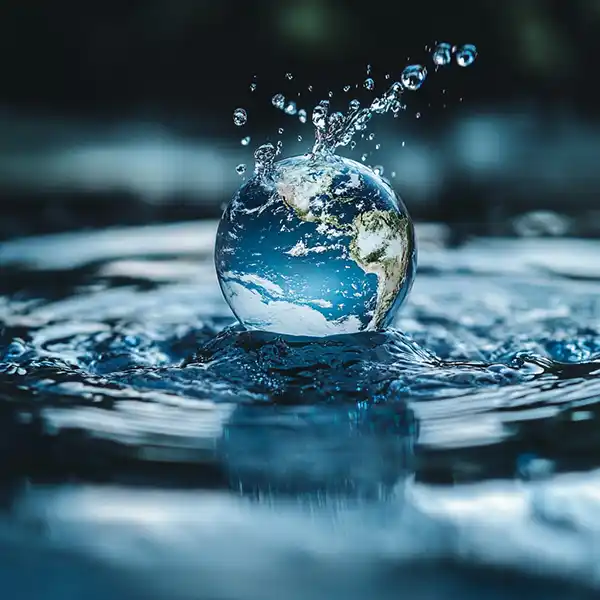Water Vapour
Nature’s Climate Stabiliser

Water’s Role
How Water Molecules in the Atmosphere Positively Impact Climate by Stabilising Natural Processes
Water vapour is responsible for clouds and snow. These reduce the energy absorbed by Earth by changing emissivity, as per the Stefan-Boltzmann law, lowering the planet’s temperature. Water vapour affects albedo (1 – emissivity per Kirchoff’s law), thus influencing Earth’s temperature thermodynamically.
Contrary to popular belief, water vapour acts as a primary anti-greenhouse gas. Since the Sun supplies all the energy warming Earth, changes in emissivity alone can alter the planet’s temperature. According to Newton’s law, warmer objects radiate more energy. Therefore, even if water vapour absorbs energy in the atmosphere, it only causes a brief phase shift, not a temperature change, as Earth constantly seeks thermodynamic equilibrium.
While negligible compared to solar irradiance, geothermal energy can still influence weather patterns by warming ocean waters.
Water vapour follows the back-body radiation principle, maintaining a constant ratio. Newton’s law applies to convection but does not apply to radiation. Some greenhouse gases result from heating rather than causing it, fitting Earth’s physics. They’re similar to a thinly insulated body irradiated with immense solar power.
Water acts like a storage capacitor, storing and releasing energy based on the surrounding environment. Warmer clouds release heat to a cooler environment and vice versa, creating a stabilising effect.
Water vapour, the gaseous form of water, exists only under specific pressure and temperature conditions, typically below 3000-4000 meters above ground. Above these altitudes, the low pressure and temperatures prevent water vapour from existing, resulting in liquid forms like clouds or fog.
In physics, ”precipitation” refers to the constant amount of water vapour in the atmosphere. Excess vapour turns into clouds or fog, eventually precipitating as rain and returning to rivers and oceans. Water vapour is a greenhouse gas, but unlike CO2, its levels are constant, making it a climate change mitigator rather than a driver.
Water vapour, with a lifecycle of a few weeks, contrasts with CO2, which stays in the atmosphere for 300-1000 years and acidifies oceans. The historical water cycle, stable over 500 years, maintained ecological and biological balance. However, burning fossil fuels releases billions of litres of water, stored deep within Earth for over 600 million years, into the atmosphere. This newly released water, carrying toxic compounds, affects ocean salinity and pH, harming marine life.

